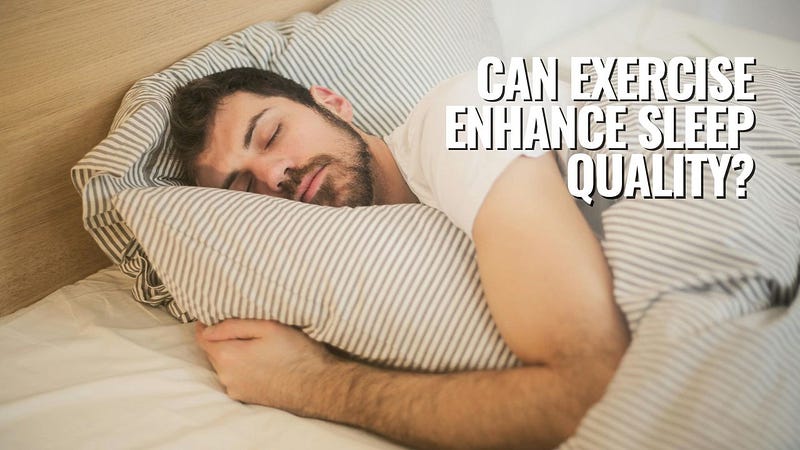Unlocking the Benefits of Exercise for Better Sleep Quality
Written on
Chapter 1: The Connection Between Exercise and Sleep
Recent scientific investigations have shed light on the relationship between physical activity and sleep, revealing that exercise might be a key solution for those struggling with insomnia. Long-term studies conducted across various European nations have shown that engaging in regular physical activity can aid in falling asleep more easily. But how frequently should one engage in exercise to reap these benefits?

[Photo by Andrea Piacquadio from Pexels]
The benefits of physical activity are gaining increasing recognition within the scientific community. While it's well-established that exercise contributes positively to health, recent studies indicate that consistent, moderate exercise can enhance cognitive functions like learning and memory. Interestingly, when it comes to longevity, women appear to benefit more from exercise than men. So, how does this translate to sleep quality? Researchers have developed specific guidelines based on their findings.
Section 1.1: Insights from a Decade-Long Study
The findings from a comprehensive 10-year international study, published in the journal “BMJ Open,” highlight that regular exercise—about 2 to 3 times per week—can significantly lower the risk of insomnia. Participants in this study, totaling 4,399 adults (2,085 men and 2,254 women) from nine European nations, provided insights into their weekly physical activity levels and insomnia experiences.

[Photo by Li Sun from Pexels]
The initial assessment of participants was conducted between 1998 and 2002, with follow-up surveys occurring from 2011 to 2014. Those who exercised at least twice a week for a minimum of one hour were classified as physically active. The study revealed interesting variances between countries; for instance, Norwegians were found to be the most active, while individuals from Estonia and Spain showed lower levels of engagement. Over the decade, the study tracked the activity levels of participants: 37% remained consistently inactive, while 25% maintained an active lifestyle.
Subsection 1.1.1: Impact of Lifestyle on Sleep Patterns
After adjusting for various factors such as age, gender, and body mass index (BMI), the results indicated that consistently active participants experienced a 42% reduction in difficulties falling asleep and a 22% decrease in insomnia symptoms overall.

[Photo by HY AAN from Pexels]
Among those who maintained regular exercise, a notable 55% reported sleeping well, while only 29% experienced short sleep durations of 6 hours or less. In contrast, participants who increased their activity levels during the study were 21% more likely to enjoy restful sleep than those who remained inactive.
Researchers acknowledged the limitations in objectively measuring changes in activity levels over the ten years, as all data were self-reported. They emphasized, “Our findings align with previous research demonstrating the positive effects of exercise on insomnia. However, this study underscores the significance of sustained physical activity,” noting that the advantages diminish for individuals who cease regular exercise.
Chapter 2: The Importance of Consistency in Physical Activity
Dear Readers
I wish to address an important issue facing content creators on platforms like Medium.com. Compensation for our hard work is often minimal, despite our dedication to providing valuable content. If you appreciate my writing, please consider supporting me on my “Buy Me a Coffee” page. Your contributions, no matter the amount, can inspire me to continue sharing engaging and thought-provoking pieces. Thank you for being part of this journey!

